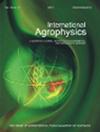求助PDF
{"title":"有机废弃物回用对旱地农业土壤酶和微生物数量的影响","authors":"Ling Sun, Zhixu Sun, Yaa Opoku-Kwanowaa, Juan Hu, Jinggui Wu","doi":"10.31545/intagr/142368","DOIUrl":null,"url":null,"abstract":"Corn straw and animal manure are high-quality organic materials which contain a large amount of organic matter as well as nitrogen (N), phosphorus (P), and other trace elements necessary for plant growth and agricultural sustainability (Kumar et al., 2018). Statistical data have shown that every year, about 700 million tonnes of crop straw and 3.8 billion tonnes of animal manure are produced as agricultural waste in China (Wang et al., 2017; Wang et al., 2020). The burning of straw and the inappropriate disposal of animal manure leads to a waste of resources and environmental pollution (Ji, 2015). Returning straw to the field is an effective practice that facilitates the management of agricultural residues (Blumfield et al., 2003). Hou et al. (2012) reported that the application of straw mulch is a traditional agricultural practice used to reduce evaporation and improve crop yields, however, the traditional ways of applying mulch do have some shortcomings, such as the slow decomposition rate of the straw which leads to a low emergence rate for seedlings (Hu et al., 2016). Lafond et al. (2009) found that straw mulch had no significant effects on crop production and soil quality. Therefore, this research seeks to test a new method of returning straw, which may serve to alleviate the shortcomings of the traditional straws techniques in order to improve sustainable agricultural production. © 2021 Institute of Agrophysics, Polish Academy of Sciences","PeriodicalId":13959,"journal":{"name":"International Agrophysics","volume":" ","pages":""},"PeriodicalIF":2.0000,"publicationDate":"2021-11-15","publicationTypes":"Journal Article","fieldsOfStudy":null,"isOpenAccess":false,"openAccessPdf":"","citationCount":"0","resultStr":"{\"title\":\"Effects of the returning organic wastes on soil enzymes and microbial quantity in dryland farming\",\"authors\":\"Ling Sun, Zhixu Sun, Yaa Opoku-Kwanowaa, Juan Hu, Jinggui Wu\",\"doi\":\"10.31545/intagr/142368\",\"DOIUrl\":null,\"url\":null,\"abstract\":\"Corn straw and animal manure are high-quality organic materials which contain a large amount of organic matter as well as nitrogen (N), phosphorus (P), and other trace elements necessary for plant growth and agricultural sustainability (Kumar et al., 2018). Statistical data have shown that every year, about 700 million tonnes of crop straw and 3.8 billion tonnes of animal manure are produced as agricultural waste in China (Wang et al., 2017; Wang et al., 2020). The burning of straw and the inappropriate disposal of animal manure leads to a waste of resources and environmental pollution (Ji, 2015). Returning straw to the field is an effective practice that facilitates the management of agricultural residues (Blumfield et al., 2003). Hou et al. (2012) reported that the application of straw mulch is a traditional agricultural practice used to reduce evaporation and improve crop yields, however, the traditional ways of applying mulch do have some shortcomings, such as the slow decomposition rate of the straw which leads to a low emergence rate for seedlings (Hu et al., 2016). Lafond et al. (2009) found that straw mulch had no significant effects on crop production and soil quality. Therefore, this research seeks to test a new method of returning straw, which may serve to alleviate the shortcomings of the traditional straws techniques in order to improve sustainable agricultural production. © 2021 Institute of Agrophysics, Polish Academy of Sciences\",\"PeriodicalId\":13959,\"journal\":{\"name\":\"International Agrophysics\",\"volume\":\" \",\"pages\":\"\"},\"PeriodicalIF\":2.0000,\"publicationDate\":\"2021-11-15\",\"publicationTypes\":\"Journal Article\",\"fieldsOfStudy\":null,\"isOpenAccess\":false,\"openAccessPdf\":\"\",\"citationCount\":\"0\",\"resultStr\":null,\"platform\":\"Semanticscholar\",\"paperid\":null,\"PeriodicalName\":\"International Agrophysics\",\"FirstCategoryId\":\"97\",\"ListUrlMain\":\"https://doi.org/10.31545/intagr/142368\",\"RegionNum\":4,\"RegionCategory\":\"农林科学\",\"ArticlePicture\":[],\"TitleCN\":null,\"AbstractTextCN\":null,\"PMCID\":null,\"EPubDate\":\"\",\"PubModel\":\"\",\"JCR\":\"Q2\",\"JCRName\":\"AGRONOMY\",\"Score\":null,\"Total\":0}","platform":"Semanticscholar","paperid":null,"PeriodicalName":"International Agrophysics","FirstCategoryId":"97","ListUrlMain":"https://doi.org/10.31545/intagr/142368","RegionNum":4,"RegionCategory":"农林科学","ArticlePicture":[],"TitleCN":null,"AbstractTextCN":null,"PMCID":null,"EPubDate":"","PubModel":"","JCR":"Q2","JCRName":"AGRONOMY","Score":null,"Total":0}
引用次数: 0
引用
批量引用
Effects of the returning organic wastes on soil enzymes and microbial quantity in dryland farming
Corn straw and animal manure are high-quality organic materials which contain a large amount of organic matter as well as nitrogen (N), phosphorus (P), and other trace elements necessary for plant growth and agricultural sustainability (Kumar et al., 2018). Statistical data have shown that every year, about 700 million tonnes of crop straw and 3.8 billion tonnes of animal manure are produced as agricultural waste in China (Wang et al., 2017; Wang et al., 2020). The burning of straw and the inappropriate disposal of animal manure leads to a waste of resources and environmental pollution (Ji, 2015). Returning straw to the field is an effective practice that facilitates the management of agricultural residues (Blumfield et al., 2003). Hou et al. (2012) reported that the application of straw mulch is a traditional agricultural practice used to reduce evaporation and improve crop yields, however, the traditional ways of applying mulch do have some shortcomings, such as the slow decomposition rate of the straw which leads to a low emergence rate for seedlings (Hu et al., 2016). Lafond et al. (2009) found that straw mulch had no significant effects on crop production and soil quality. Therefore, this research seeks to test a new method of returning straw, which may serve to alleviate the shortcomings of the traditional straws techniques in order to improve sustainable agricultural production. © 2021 Institute of Agrophysics, Polish Academy of Sciences


